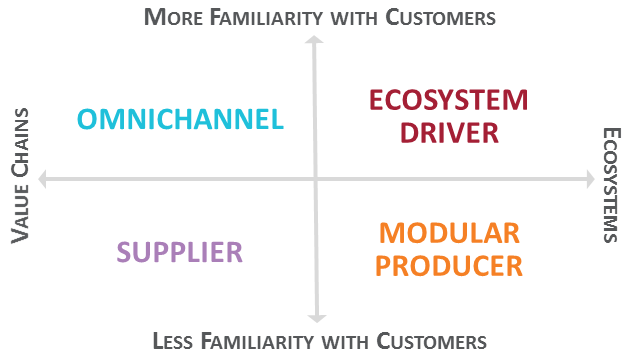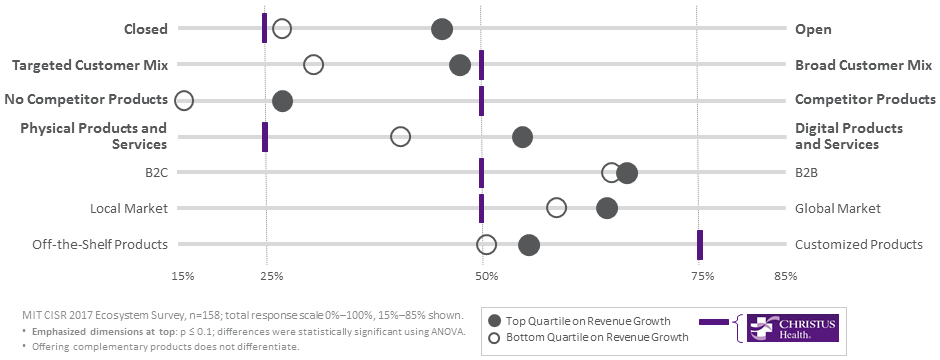Every large and ambitious company today should consider— at least for its best customers—the Ecosystem Driver model: becoming THE destination for customers in a particular domain such as health and wellness, home purchase, or small business management. Why an Ecosystem Driver? Because it is the most successful model of the digital era to date.[foot]Ecosystem Drivers achieve better performance than Suppliers, Omnichannel businesses, and Modular Producers. See P. Weill, S. L. Woerner, andR. E. Samuel, “Aetna: Building a Healthier World via a Digital Ecosystem,” MIT Sloan CISR Research Briefing, Vol. XV, No. 11, November 2015. https://cisr.mit.edu/publication/2015_1101_AetnaDigitalEcosytem_WeillWoernerSamuel[/foot] But it is also a challenging model to pursue.
In a 2013 MIT CISR research briefing,[foot]P. Weill and S. L. Woerner, “The Next-Generation Enterprise: Thriving in an Increasingly Digital Ecosystem,” MIT Sloan CISR Research Briefing, Vol. XIII, No. 4, April 2013. https://cisr.mit.edu/publication/2013_0401_DigitalEcosystems_WeillWoerner[/foot] we introduced a 2x2 framework that describes the four ways an enterprise can make money in the digital era. Since this research began, we’ve collected data and stories from more than a thousand companies.[foot]MIT CISR’s ecosystem research began in 2012 and is ongoing. It comprises interviews with more than 150 senior executives about digital transformation initiatives of their companies; the following four MIT CISR surveys: MIT CISR 2017 Digital Transformation Survey (n=400), MIT CISR 2017 Ecosystem Survey (n=158), MIT CISR 2015 CIO Digital Disruption Survey (N=413), and MIT CISR 2013 Ecosystem Survey (n=101); and the Harvey Nash/KPMG CIO Survey 2017 (N=701), to which we added ecosystem questions.[/foot] In a 2017 survey, we explored key ecosystem design dimensions.
This briefing introduces seven key design dimensions of ecosystems; four are statistically important influences on the performance of companies in an ecosystem, and should be targeted by leaders of companies trying to create attractive, successful ecosystems. We then describe how aspiring Ecosystem Driver CHRISTUS Health, in the complex and high-cost domain of health and wellness, is focusing on the four most important dimensions while improving the patient experience and managing cost.





